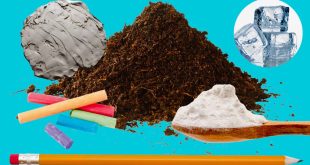 To such conclusion scientists have come.
To such conclusion scientists have come.
Bacteria that live in dental plaque are the main cause of tooth decay, learned to avoid antibiotic therapy, hiding inside with the adhesive polymer of the biofilm on the tooth enamel. But now scientists have developed nanoparticles that effectively destroy plaque and prevent tooth decay.
Karies-lechenie-stomatologiya-Ivanteevka_result
Nanoparticles, represented by a team from the University of Pennsylvania, catalyze the activity of hydrogen peroxide — common natural antiseptic. Activated hydrogen peroxide is a free radical, which simultaneously destroy the structure of the biofilm and kill the bacteria.
The new study is the work of Lizzana Gao (Lizeng Gao), published in 2007 in the journal Nature Nanotechnology. He was one of the first showed that the nanoparticles until then believed to be biologically and chemically inert, can have the properties of enzymes (natural boosters). For example, scientist have demonstrated that nanoparticles of iron oxide catalyze oxidative reactions similar to the enzyme peroxidase.
When, in 2013, Gao joined the lab of Professor Hyun Ko (Koo Hyun), it is suggested to use iron oxide for the treatment of bacterial diseases of the oral cavity.
“When he first presented his idea, I was very skeptical, because free radicals can damage healthy tissue,” says Ko. But Gao denied this, explaining that the activity of nanoparticles depends on pH.
Experimentally, the researcher found that nanoparticles are not active at neutral pH between 6.5 and 7. These values are characteristic for blood and oral mucosa of man. But in an acidic medium at a pH of about 5, the activity of the particles increased sharply. Such conditions correspond to the dental plaque in the processing of sugars to form acids.
The researchers turned for help to David Cormode (David Cormode), who had extensive experience with iron oxide, and helped the team to synthesize and assess the effectiveness of nanoparticles, some of which had already been approved for clinical trials in humans.
Through laboratory experiments, the researchers grew a biofilm populated by bacteria streptococci, similar to those that occur on tooth enamel. Then they worked on artificially produced plaque sugars to cause an oxidation environment. Then the researchers injected the nanoparticles, which stick to the biofilm and the catalyzed activation of hydrogen peroxide. Moreover, even after a course of “treatment” nanoparticles remained in place and were ready again to demonstrate their catalytic properties in the subsequent oxidation environment.
Experiments showed that nanoparticles in combination with a one percent solution of hydrogen peroxide in just five minutes destroys over 99.9% of bacteria. It is 5 thousand times more effective than the treatment using only hydrogen peroxide.
In the course of work the team also found that the maximum therapeutic effect is observed in the 30-second treatment of the mouth with nanoparticles with subsequent 30-second rate of hydrogen peroxide.
Experiments in rodents have shown that the use of this therapy for three weeks significantly reduces the defeat of teeth caries compared with a control group that received no treatment and a group that received only hydrogen peroxide. Scientists have found no negative effects from the use of nanoparticles for the gums and mucosa of the oral cavity.
One of the main advantages of the new system is the cost of the drug. System components are simple to manufacture, and each session takes only about five milliliters of the medication cost few cents.
In addition, for the treatment used a very weak solution of hydrogen peroxide, which is much safer than many current tools used for teeth whitening.
Now scientists are experimenting with the shape and size of nanoparticles to reach the most effective fight plaque and tooth decay. The final assessment of a new method of treatment should give a clinical trial.








